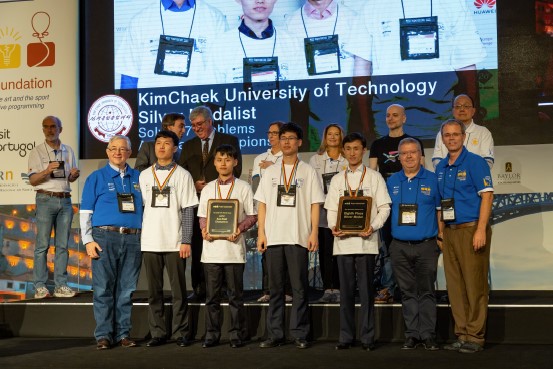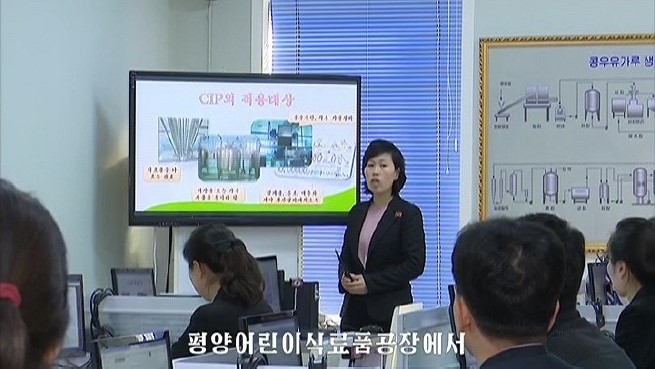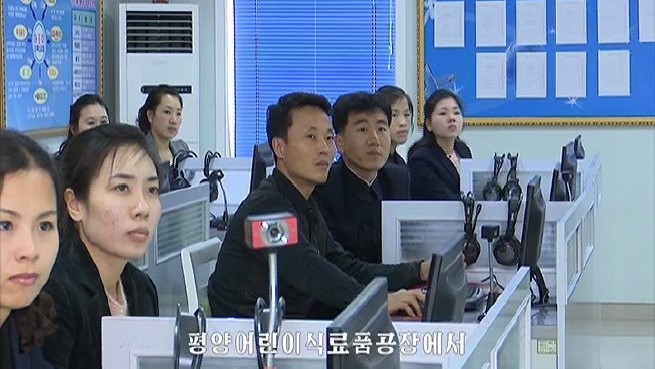Science and Technology Education in North Korea Enters the 21st Century
North Korea is moving ahead with a comprehensive reform of its education system that puts science and technology at its center. Plans were approved at a cabinet meeting over the weekend and follow a call by Kim Jong Un in September to improve the level of the nation’s education.
At the weekend meeting, education officials were told by Vice-Premier Jon Kwang Ho to “brace themselves to put the level of the country’s education on the most developed level as soon as possible,” KCNA reported on Monday, October 21.[1]
The meeting follows a Rodong Sinmun editorial on October 7 that highlighted the vital role that science and technology plays in strengthening North Korea’s economy and underlined the importance of teachers in fostering new generations of engineers. The editorial noted that, “At various sectors in the society, the demand for talents to lead the new era is dramatically increasing…Teachers of our country are working hard to play their role to realize the party’s goal to…turn the country into one with strong talents.”[2]
The editorial, which was to mark “World Teachers’ Day,” comes as North Korea appears to be reforming its secondary and higher education systems for science and technology. The reform puts more emphasis on identifying, capturing and fostering talent at a younger age. The new system has created 11 new secondary schools of information technology, one in each province, according to a September 3 Rodong Sinmun report.[3] The newspaper also said 37 universities had established 85 new departments and corresponding courses on subjects including information security, robotics and engineering.
This new strategy is a step beyond much of what we’ve seen in North Korea, where sci-tech strategy has focused on research and development. The roots of the change can be traced back to the April 2018 plenary session of the Party Central Committee where Kim Jong Un called on delegates to strengthen the country’s science and technology development by improving the education system. North Korea has emphasized science and technology for decades and it’s always been closely tied to development of the national economy and, although often unstated, the military as well. But this new push appears to be more focused on information technology.[4]
Following the April 2018 Workers’ Party of Korea plenary session, Kim Jong Un used his 2019 new year speech to link sci-tech development to economic development but added an emphasis on education: “It is necessary to improve the quality of training talented personnel, who will shoulder the socio-economic development, by improving the teaching contents and methods in conformity with the world trend of developing education and pedagogical requirements.”
Last month, the National Conference of Teachers was held for the first time in five years and in a message to delegates, Kim said North Korea’s education system “lags far behind” the world and the party’s plans. He called on educators to rectify this “as early as possible,” and stated that, “We should set a high goal of developing new technologies and concentrate our efforts on the research into core technologies of great practical and economic significance, so as to secure the leading force of economic growth.”
The new secondary schools will work as a funnel, taking in children who have shown an aptitude for science and technology and giving them a specialized education before sending them off to university. We can see how this works through what North Korea has already done in mathematics and computer programming. Kids are exposed at an early age to mathematics and computers and teachers look out for those with an above-average aptitude. Those children are sent to more specialized classes to encourage those skills. Towards the end of their secondary education, they take part in a national programming contest and these best performers get offered places at top universities.
The system works well. We know this because the best children end up competing at the International Mathematics Olympiad and the International Collegiate Programming Contest (ICPC). At the 2019 event, the team from Kim Chaek University of Technology came in eighth place, ahead of many world-class universities including Oxford, Cambridge, Harvard and Stanford. It might take several years for the results of this new focus to bear fruit, but the strategy appears to be in place and in operation.

In another part of his message to teachers, Kim Jong Un also called for greater cooperation between scientists and enterprises, so engineers can work on problems faced by the country’s factories and workplaces. He opined that, “We should also take institutional measures so that scientific research institutes and enterprises, in close cooperation, can boost production and technological development and enhance intellectual creativity.”
On September 16, the state-run Sogwang website echoed this message, saying that such cooperation can also benefit scientists by giving them real-world experience and,
“In conjunction with scientific research institutes, every business should strongly engage in research and development of new technologies, something that is necessary to realize localization of raw materials, fuel and facilities, CNC (computer numerical control) and unmanned production processes.”[5]
The new focus on secondary education comes a few years after the party began pushing science and technology education in the workplace. Many newer workplaces now have a science and technology room where workers can learn new skills or improve on how they do things. The image below shows one such room at the Pyongyang Children’s Foodstuff Factory. It appears this is a lesson on “clean in place,” a method for cleaning the inside of pipes and tanks and other equipment without taking it apart. Many of these rooms are connected to the national intranet so, in addition to in-person lectures, lessons can be streamed from universities in Pyongyang.


But perhaps the greatest indication of the importance that the government is giving science and technology can be seen in the changing face of Pyongyang. The Sci-Tech Complex now dominates Ssuk Islet and there are two distinct neighborhoods of apartments given to scientists for work on the nuclear and space programs.
- [1]
“Enlarged plenary of DPRK Cabinet held,” KCNA (Accessed through KCNA Watch), October 20, 2019, https://kcnawatch.org/newstream/1571599842-464652687/enlarged-plenary-meeting-of-dprk-cabinet-held/.
- [2]
박진향, “세계적으로 더욱 중시되고있는 교원의 역할,” Rodong Sinmun (Accessed through KCNA Watch), October 7, 2019, https://kcnawatch.org/newstream/1570395682-18657515/세계적으로-더욱-중시되고있는-교원의-역할/.
- [3]
김명훈, “교육체계가 완비되고있다,” Rodong Sinmun (Accessed through KCNA Watch), September 3, 2019, https://kcnawatch.org/newstream/1567458191-378899746/교육체계가-완비되고있다/.
- [4]
It should be noted that in typical North Korean usage, “science and technology” encompasses the entirety of both subjects and not just high-tech. So a sci-tech development could just as easily be a new robot as it could be a new method of rearing fish.
- [5]
“생산과 기술발전 추동히는 과학연구관, 기업체들의 협력,” 서광, September 16, 2019, http://sogwang.com/kp/post/5d7f72f72b73750318b6406b.
